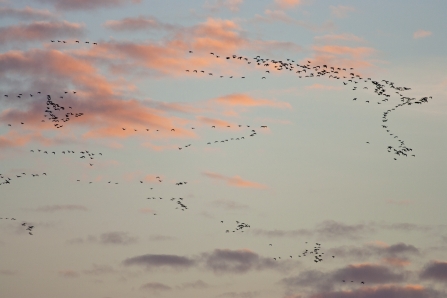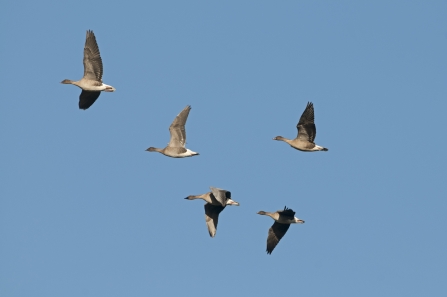There’s only a light frost but the cold is seeping through the soles of my boots and into my toes. It’s early, to the east the horizon is a pale blue tinged with orange. The rest of the sky is black, studded with stars.
The air is still. The memory of my morning soundscape; the extra early alarm call, the humming fridge and the click of the toaster releasing its load has evaporated. The stillness is punctuated by the distant honking of pink-footed geese. They are getting closer but it’s a while before I spot their distinctive v-formation in the gradually lightening sky.
First one flock then another appears. As the orange glow of the rising sun intensifies, the world is wakening. A small group of teal seem to appear from nowhere, dark silhouettes skimming low then disappearing. A curlew calls.



